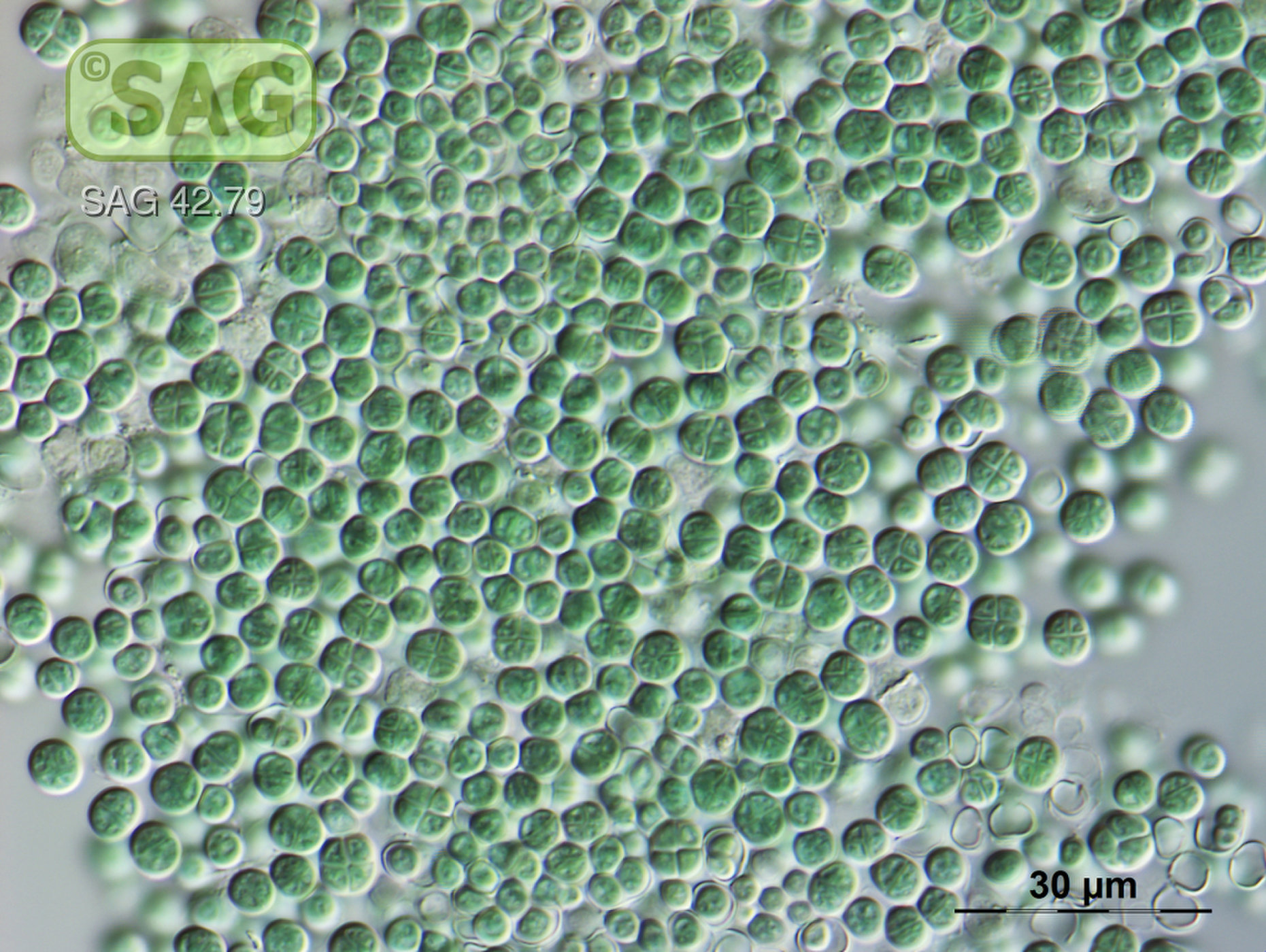Chroococcidiopsidales on:
[Wikipedia]
[Google]
[Amazon]
 ''Chroococcidiopsis'' is a
''Chroococcidiopsis'' is a
''Chroococcidiopsis''
AlgaeBase {{Taxonbar, from=Q1088359 Cyanobacteria Cyanobacteria genera Space-flown life Extremophiles
 ''Chroococcidiopsis'' is a
''Chroococcidiopsis'' is a photosynthetic
Photosynthesis is a process used by plants and other organisms to convert light energy into chemical energy that, through cellular respiration, can later be released to fuel the organism's activities. Some of this chemical energy is stored in c ...
, coccoidal bacterium. A diversity of species and cultures exist within the genus, with a diversity of phenotypes. Some extremophile members of the order Chroococidiopsidales are known for their ability to survive harsh environmental conditions, including both high and low temperatures, ionizing radiation
Ionizing radiation (or ionising radiation), including nuclear radiation, consists of subatomic particles or electromagnetic waves that have sufficient energy to ionize atoms or molecules by detaching electrons from them. Some particles can travel ...
, and high salinity.
Desiccation resistance
The ability of ''Chroococcidiopsis'' to resistdesiccation
Desiccation () is the state of extreme dryness, or the process of extreme drying. A desiccant is a hygroscopic (attracts and holds water) substance that induces or sustains such a state in its local vicinity in a moderately sealed container.
...
in arid environments is due in part because it colonizes the underside of translucent rocks. The underside of these rocks provides enough condensed moisture for growth while the rock's translucent nature allows just enough light to reach the organism for photosynthesis to occur.
Mars colonization
Due to its resistance to harsh environmental conditions, especially low temperature, low moisture, and radiation tolerance, ''Chroococcidiopsis'' has been thought of as an organism capable of living on Mars. Scientists have speculated about the possibility of introducing ''Chroococcidiopsis'' to the Martian environment to aid in the formation of an aerobic environment. In addition to oxygen production, ''Chroococcidiopsis'' could aid in the formation of soil on the Martian surface. On Earth, soil is formed by plant, microbial, and geophysical activity on a mineral substrate. The soil produced by chemical weathering of rocks and oxygen produced by photosynthesis could one day provide the conditions necessary for humans to grow food on Mars, possibly allowing for permanent human civilizations on the planet. On a shorter time scale, cyanobacteria such as ''Chroococcidiopsis'' could be used in closed systems to produce resources for human-occupied outposts on Mars without altering the planet's surface or atmosphere. A space mission calledEXPOSE-R2
Expose, exposé, or exposed may refer to:
News sources
* Exposé (journalism), a form of investigative journalism
* ''The Exposé'', a British conspiracist website
Film and TV Film
* ''Exposé'' (film), a 1976 thriller film
* ''Exposed'' (1932 ...
was launched on 24 July 2014 aboard the Russian Progress M-24M
Progress M-24M (russian: Прогресс М-24М, italic=yes), identified by NASA as Progress 56P, is a Progress spacecraft used by Roskosmos to resupply the International Space Station (ISS) during 2014. Progress M-24M was launched on a six ...
, and was attached on 18 August 2014 outside the ISS on the Russian module Zvezda. The experiment included samples of ''Chroococcidiopsis'' that were exposed to simulated Martian atmosphere, UVC radiation and temperature extremes. In 2022, the findings of the experiments were published.
UV and desiccation resistance
Biofilms of ''Chroococcidiopsis'' were exposed to Mars-like UV-flux anddesiccation
Desiccation () is the state of extreme dryness, or the process of extreme drying. A desiccant is a hygroscopic (attracts and holds water) substance that induces or sustains such a state in its local vicinity in a moderately sealed container.
...
for up to seven years. Biofilms that were either (1) dried or (2) both dried and UV irradiated were able to recover. When these biofilms were rewetted the nucleotide excision repair
Nucleotide excision repair is a DNA repair mechanism. DNA damage occurs constantly because of chemicals (e.g. intercalating agents), radiation and other mutagens. Three excision repair pathways exist to repair single stranded DNA damage: Nucle ...
genes encoding UvrA, UvrB and UvrC were over-expressed. This suggests that nucleotide excision repair
Nucleotide excision repair is a DNA repair mechanism. DNA damage occurs constantly because of chemicals (e.g. intercalating agents), radiation and other mutagens. Three excision repair pathways exist to repair single stranded DNA damage: Nucle ...
of accumulated DNA damages contributed to the recovery.
See also
* '' Deinococcus radiodurans''References
External links
''Chroococcidiopsis''
AlgaeBase {{Taxonbar, from=Q1088359 Cyanobacteria Cyanobacteria genera Space-flown life Extremophiles